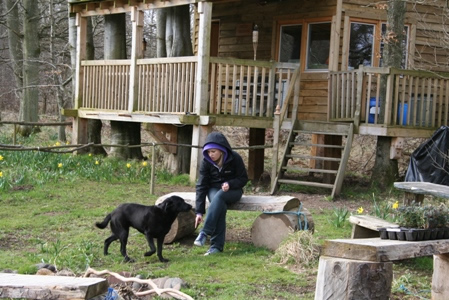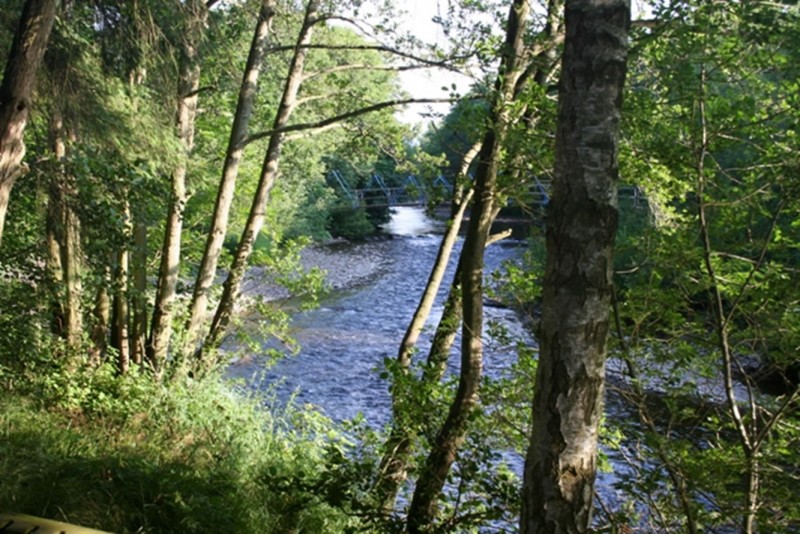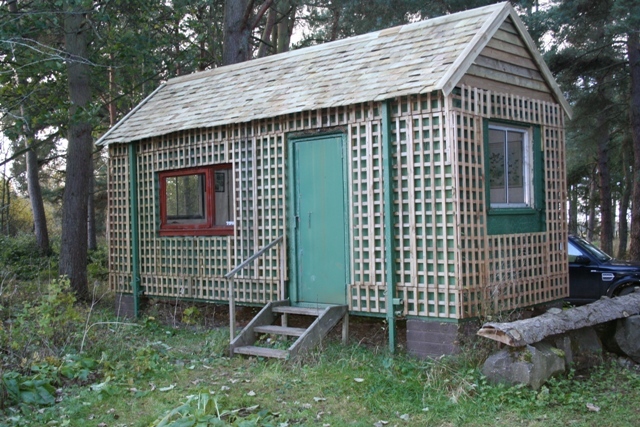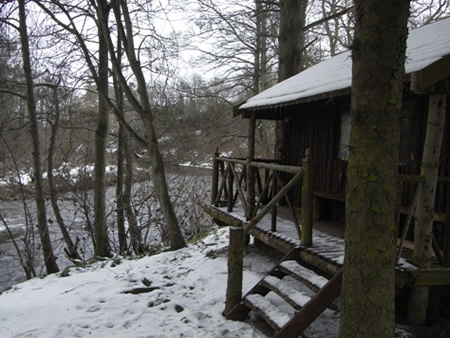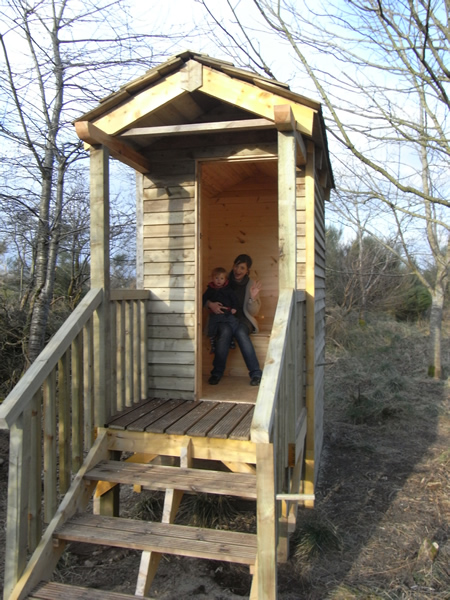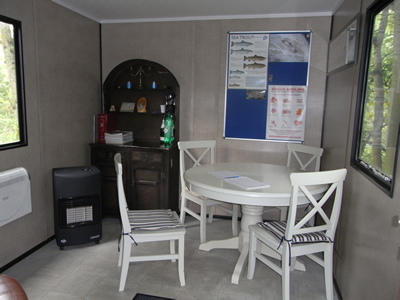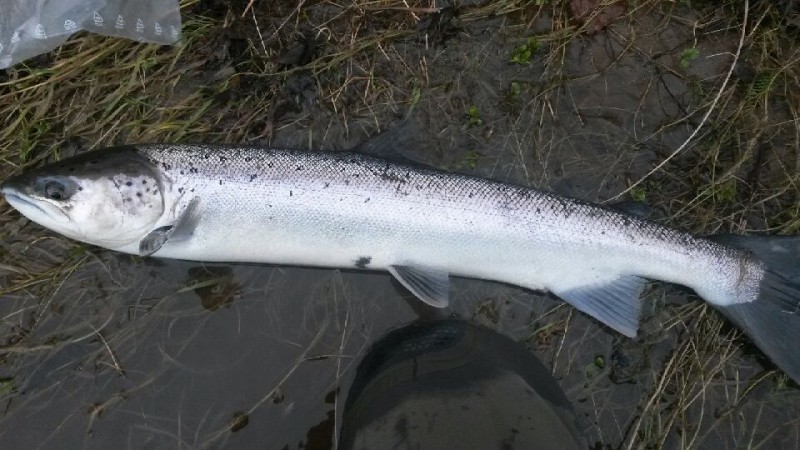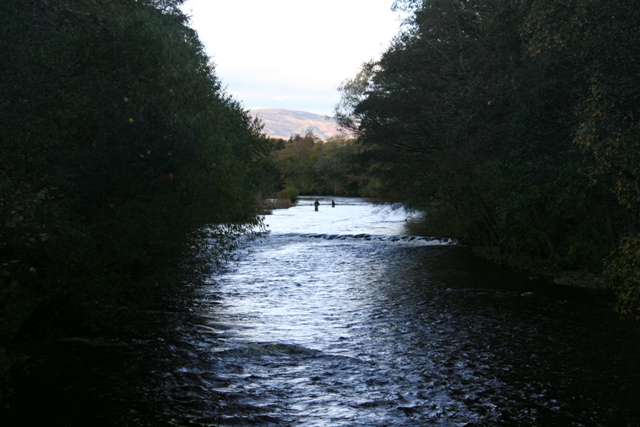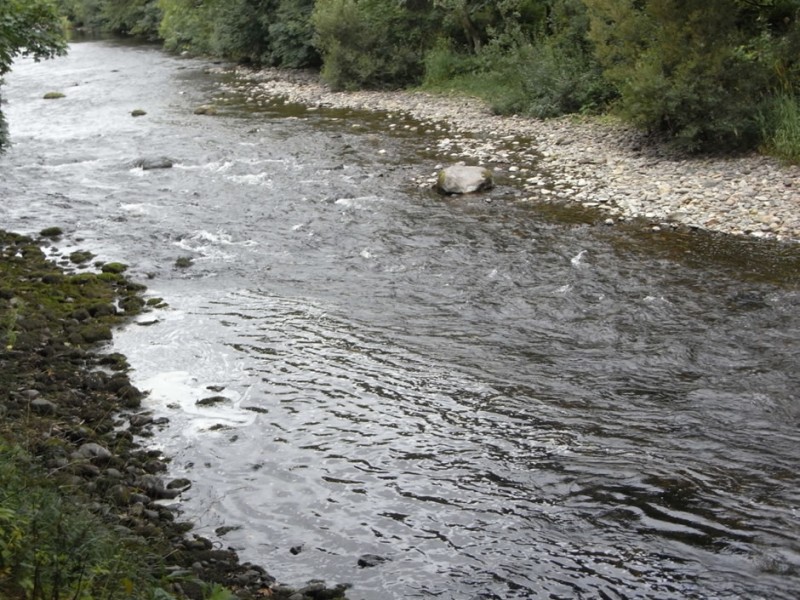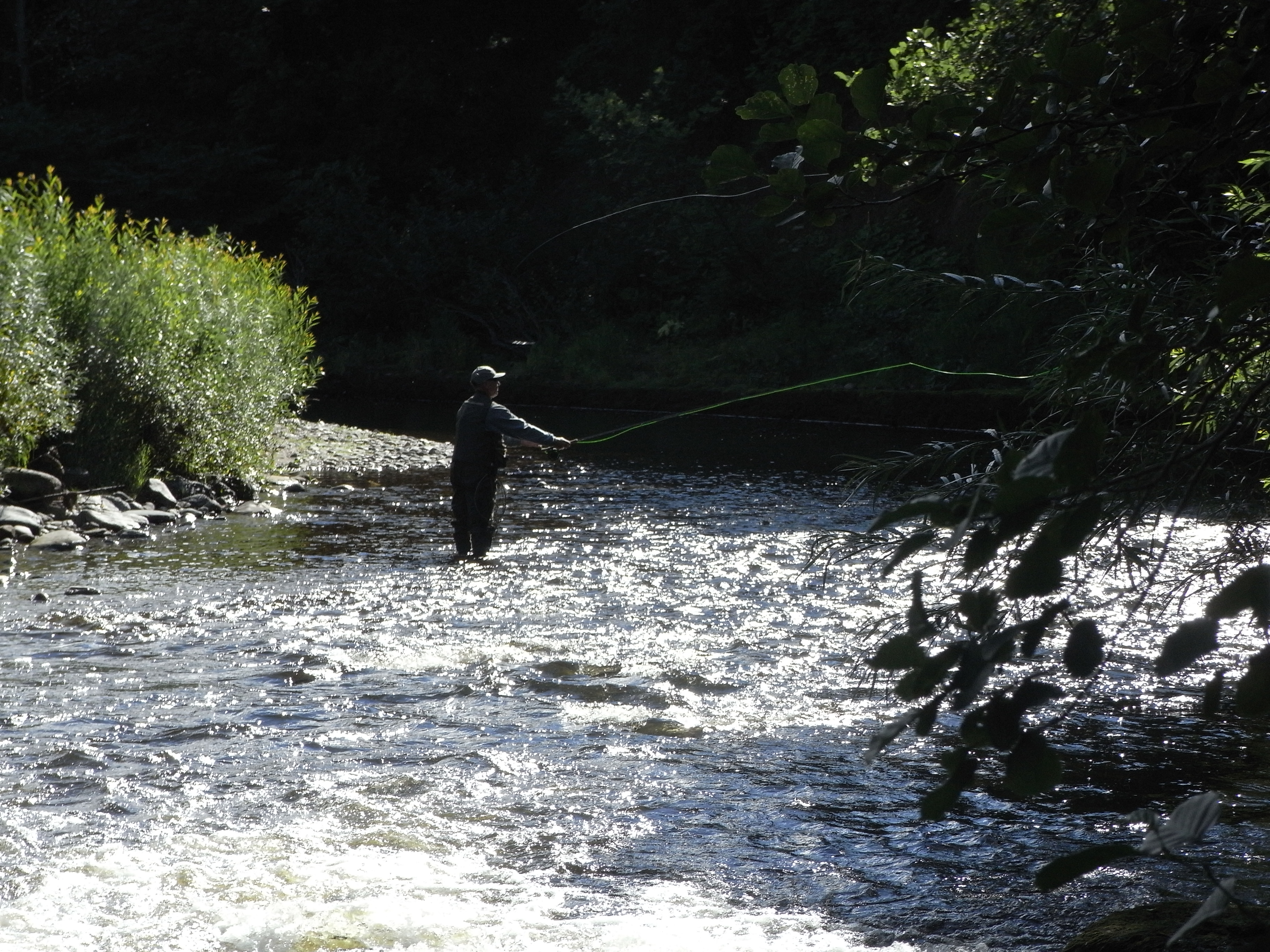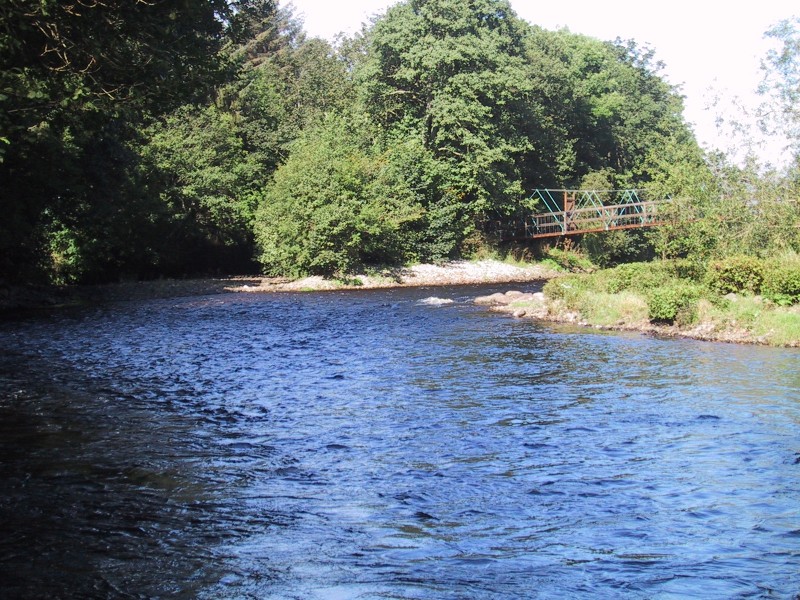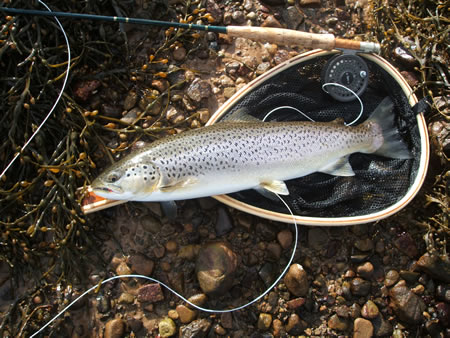FCW Facebook ‘Likes’ now over 4000
April 1st, 2014The new Season: 2014
February 22nd, 2014February the sixteenth this year was a Sunday, so no-one fished on that day. On Monday Moray caught a well conditioned kelt in Haughs Pool (immediately below the old pipe bridge) and on Thursday Ian Mac Master caught a thin but well restored grilse kelt in the Flats (Milton Beat). No frersh salmon have been seen yet.
A well-mended but very thin grilse kelt caught and returned to the river in Flats on Milton Beat. The ‘belt-like’ profile, distended vent, oversized head and hard bright silver colour are characteristics of spent salmon (kelts) easily seen in this photo by Ian MacMaster. Closer inspection would most likely reveal the presence of gill maggots. It is good to see the fins of this fish in such good condition. Unfortunately, very few of the South Esk’s salmon kelts live to return to the river to spawn again. Those that do (a lot less than 10%) are nearly all female.
The South Esk is in excellent ply, with clean gravels and manageable levels of repair to banks needed after a series of moderate spates – nothing approaching the disastrous floods of further south. I feel we have escaped lightly.
Some of the rubbish collected by the Scottish Oak Team last week from FCW riverbanks and woods after the winter floods. This was the result of a one-day clear up. One of the issues for anyone managing a river beat is that people throw their rubbish into the river – including on one memorable occasion a full-size blow-up Japanese (female) doll – which can ruin the feeling of wild natural environment that a river should have in its riparian setting. We spend a lot of time removing the junk and detritus of our ‘civilisation’.
The situation with the Usan nets, as I mentioned in an earlier blog, now needs resolving – at the very least to sort out the issue of nets killing fish during slap periods and the close season. We should not allow a situation where the law is being ignored (or worse) to damage the South Esk’s wild salmon and sea trout stocks. At present it most certainly is.
There may now be signs of official movement, with a legal process starting, a national review of freshwater angling management, another assessment of the value of Scottish freshwater angling to the economy and an ongoing focus on the South Esk by Marine Scotland and SEPA. In the background, but most importantly, the River’s SAC status makes it a priority in terms of the two qualifying species – Atlantic salmon and the freshwater mussel.
You would have thought that all this research and other activity might have resulted in more targeted conservation action. Not yet I’m afraid.
TA
Finavon Castle Water & Sea Trout
February 22nd, 2014Memories of Fine Summers at FCW.
Finavon Castle Water has a reputation for night fishing for sea trout. The pictures in this section show how in low water, when many rivers are unproductive, the pools with their long tails provide an idyllic setting for fly fishing through the night.
Milton Beat FCW. The pools in this photograph contain sea trout, often in considerable numbers, from the middle of June through to mid August. The level of the river in this picture is perfect for night sea trout fishing.
The long days and dusky nights, when it never gets truly dark, of late May, June and July, are the setting for thrills of big fish (as opposed to the sight or sound of a splash in daylight!) moving close to the surface, sometimes only feet away from the wading angler. Quiet ripples against your legs as you wade sometimes reveal the whereabouts of a shoal of sea trout. On other occasions you hear soft swirling splooshes beneath the overhanging branches of the opposite bank, and sometimes a sea trout will leap clean out of the water, re-entering the river with a loud splash, shattering the still night. Scudding clouds, starlit nights, stoneflies on the warmest nights crwaling over your face and naked arms, the continuous moving shadows, sounds of birds and fauna above the cello sounds of the river at night. That is night fishing. It twangs the pre-historic hunter in you and reminds you of the people of Finavon Hill two thousand years ago, who fished these very pools, albeit with spear, trap and net.
This view of the head of Tyndals Pool with ‘the armchair rock’ (ACR) is well known to people who fish at Finavon because this is the view monitored by the live webcam on the FCW website. In this photo the river is at low summer level: the measure is that there is very little, if any, water betweeen the ‘ACR’ and the left bank.
Fishing quietly at night, while blending into the natural environment, gets you very close to wild creatures such as otters, who sometimes surface inside a rod’s length from where you are wading, shocking you by expelling air from their nostrils with a soft snort. They are efficient thieves and will nick any fish you may have left on the bank to pick up later and take home to eat. Nowadays we don’t kill any sea trout, because they are in a low numbers phase of their natural abundance cycle, or perhaps there are other problems of their survival yet to be identified.
The fisherman in this photo is fishing the head stream of the Red Brae, opposite the confluence with the Lemno Burn. In past years I used to check the numbers of salmon and sea trout in the Red Brae during periods of low water by beaming a powerful spotlight onto this stream. On many occasions I have seen and counted MSW salmon and sea trout in numbers exceeding 50 – all in this short stretch of streamy water. In the light of the lamp they appear like airships as they hold station in the clear water. The stream in the photo is always a potential taking place for both species.
Sometimes, usually on a half-moonlit night, you can establish an absurd conversation with tawny owls – if you are a bit of a mimic, and prepared to embarrass yourself and anyone else in the vicinity. One night a few years ago I managed to gather a whole family of tawnies around me as I quietly (while noisily hooting of course!) waded down Upper Boat Pool. I could distinguish between members of the family by the tone, structure and duration of their hooting. Some of them were very close to me, and must have seen me and realised it was a member of the species Homo Sapiens, and not another tawny, doing the hooting. I think they were playing with me, or maybe they just thought I was an Alpha male tawny!
Low water in mid summer at FCW. This is the view looking upstream in Craigo Stream towards the suspension bridge. Behind you in the photo is the comfortable and atmospheric Red Brae Hut with its wooden cut outs of big salmon and sea trout, with the name of the fishereman, the date, the fly and the pool. This is the place to be atr 4 o’clock on a July morning, while the human world is asleep and the natural world at its most active, innocent and approachable. Heaven!
Perfect fins, a hard & muscular body and unmistakeable tail shape of a fresh run sea trout. In fact this fish was caught in salt water in Orkney.
Sea trout fishing at night is pure magic. There aren’t many places where you can do it, and Finavon is among the best – when the sea trout are ‘in’ of course.
TA
